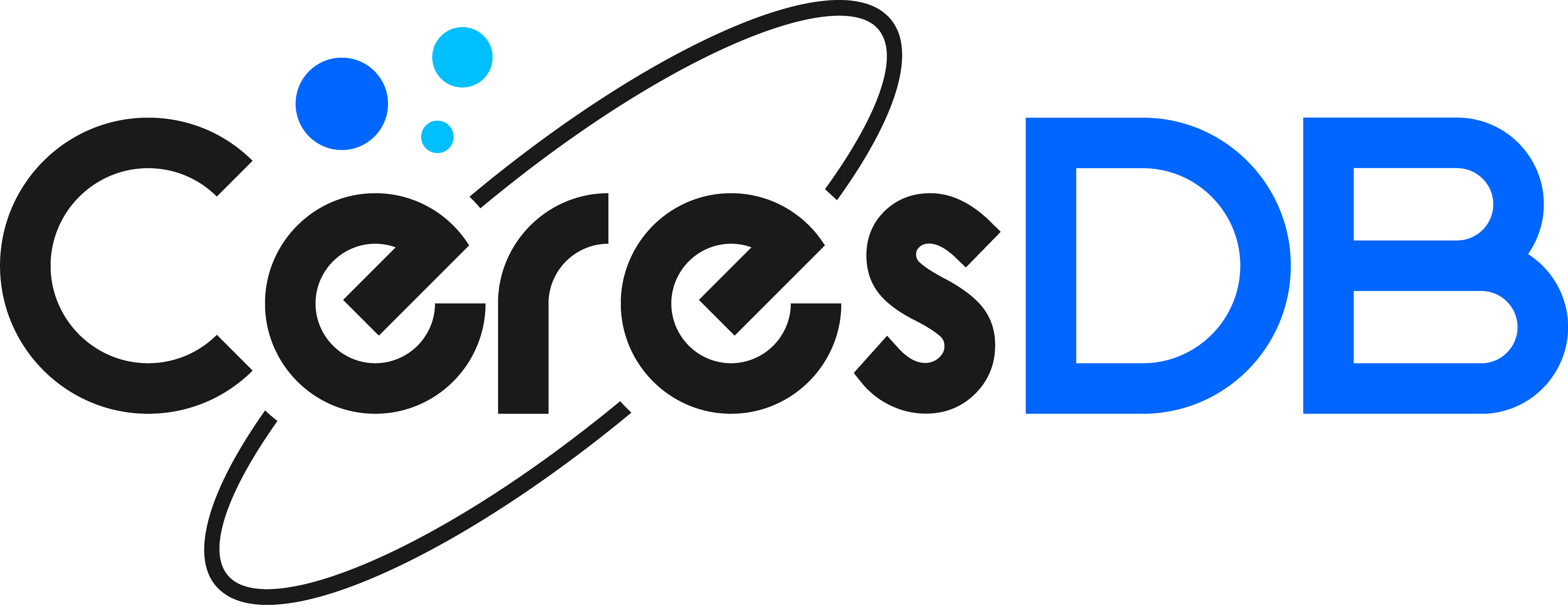CeresDB is a high-performance, distributed, schema-less, cloud native time-series database that can handle both time-series and analytics workloads.
The project is currently under rapid development. This early stage is not production ready and may incur data corruptions.
See our RoadMap
Clone this repository by git and enter it:
git clone git@github.com:CeresDB/ceresdb.git
cd ceresdbEnsure that docker is installed in your development environment, and then build the image with the provided Dockerfile:
docker build -t ceresdb .Start the ceresdb container using the built docker image:
docker run -d -t --name ceresdb -p 5440:5440 -p 8831:8831 ceresdbIn order to compile CeresDB, some relevant dependencies(including Rust toolchain) should be installed.
Assuming the development environment is Ubuntu20.04, execute the following command to install the required dependencies:
apt install git curl gcc g++ libssl-dev pkg-config cmakeIt should be noted that the compilation of the project actually has version requirements for some dependencies such as cmake, gcc, g++, etc. If your development environment is an old Linux distribution, it is necessary to manually install these dependencies of a higher version.
Rust can be installed by rustup. After installing rustup, when entering the CeresDB project, the specified Rust version will be automatically downloaded according to the rust-toolchain file.
After execution, you need to add environment variables to use the Rust toolchain. Basically, just put the following commands into your ~/.bashrc or ~/.bash_profile:
source $HOME/.cargo/envCompile CeresDB by the following command:
cargo build --release
Then you can run CeresDB using the default configuration file provided in the codebase.
./target/ceresdb-server --config ./docs/example.tomlCeresDB supports custom extended SQL protocol. Currently, you can create tables and read/write data with SQL statements through http service.
curl --location --request POST 'http://127.0.0.1:5440/sql' \
--header 'Content-Type: application/json' \
--data-raw '{
"query": "CREATE TABLE `demo` (`name` string TAG, `value` double NOT NULL, `t` timestamp NOT NULL, TIMESTAMP KEY(t)) ENGINE=Analytic with (enable_ttl='\''false'\'');"
}'curl --location --request POST 'http://127.0.0.1:5440/sql' \
--header 'Content-Type: application/json' \
--data-raw '{
"query": "INSERT INTO demo(t, name, value) VALUES(1651737067000, '\''ceresdb'\'', 100)"
}'curl --location --request POST 'http://127.0.0.1:5440/sql' \
--header 'Content-Type: application/json' \
--data-raw '{
"query": "select * from demo"
}'curl --location --request POST 'http://127.0.0.1:5440/sql' \
--header 'Content-Type: application/json' \
--data-raw '{
"query": "show create table demo"
}'curl --location --request POST 'http://127.0.0.1:5440/sql' \
--header 'Content-Type: application/json' \
--data-raw '{
"query": "DROP TABLE demo;"
}'Any contribution is welcome!
Read our Contributing Guide and make your first contribution!
Our technical documents(still under writing and polishing) describes critical parts of ceresdb in the docs.
Some design of CeresDB references influxdb_iox, and some specific module implementations reference tikv and other excellent open source projects, thanks to InfluxDB, TiKV, and any other referenced great open source projects.
CeresDB is under Apache License 2.0.
- Check our community materials.
- Join the user group on the DingTalk: 44602802
- Contact our stuff on WeChat: chunshao2008
- Contact us via Email: ceresdb@service.alipay.com

